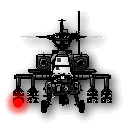Type 42 Argentinos
History & Modifications
Hercules:
During the Falklands war, Hercules provided antiaircraft escort for the destroyer taskforce. She is in service with the Argentinian Navy.
Santisima Trinidad:
Santisima Trinidads completion was delayed by a terrorist bomb. During the Falklands war, she provided antiaircraft escort for the carrier Veinticinco De Mayo.
She has been decommissioned and used for spares parts for her sister, although there are reports she may be refitted as a command ship.
(
http://web.ukonline.co.uk/aj.cashmore/a ... story.html)
--------------------------------------------------------------------------------------
Pelo que li a estória deles foi conturbada !
O Santissima Trinidad sofreu um atentado em 76 ( foi comissionado em 1974 ) e ficou encostado por muito tempo.
Os dois quase forma vendidos a Líbia depois das Falkland-Malvinas, por razões óbvias de falta de suprimentos ( trocou-se também os helis a bordo )mas isto não se concretizou.
Dados ARA
Santissima Trinidad - Classe Hercules
4100 tn a plena carga.
Dimensiones: 125,6 x 14,3 x 5,8 m
Propulsión: COGOG: 2 turbinas a gas de 50.000 HP. 2 turbinas a gas de 9.900 HP. - 2 ejes.
Velocidad: Máxima 30 nudos
Autonomía: 4.000 millas náuticas a 18 nudos.
Tripulación: 300 tripulantes
Misiles: -SUPERFICIE/AIRE
Lanzador doble British Aerospace Sea Dart MK30.
Cañones: - 1 de 4.5" (115 mm)/55 Mk8, automático.
- 2 ametralladoras de 20 mm MK7.
Torpedos: 2 lanzadores triples de tubos lanzatorpedos 3/324 mm., torpedos AS-244 antisubmarino.
Radares: Posee radares de búsqueda en aire y superficie. También de navegación y control de helicópteros y control de tiro.
Sonar: Posee sonares para búsqueda y ataque.
Helicópteros: 1 SA 219 B Alouette III / Fennec AS 555.
Comentarios: Por contrato del 18 de mayo de 1970, entre el Gobierno Argentino y la empresa Vickers Ltd. inglesa se proyectó la construcción en el astillero Barrow-In-Furness del "Hércules" y en el Astillero y Fábricas Navales del Estado (AFNE) en Río Santiago', provincia de Buenos Aires, de la "Santísima Trinidad".
Unidades Auxiliares
Transportes multitpropósito
HERCULES
Desplazamiento: 4100 Tn. a plena carga.
Dimensiones: 125,6 x 14,3 x 5,8 (mts).
Propulsión: COGOG: 2 Turbinas a gas Olympus TM38, 50.000 HP. 2 Turbinas a gas Tyne RM1A, 9.900 HP. - 2 ejes.
Velocidad: 30 Nudos (Olympus) y 18 Nudos (Tyne).
Autonomía: 4.000 Millas náuticas a 18 Nudos.
Tripulación: 300 Hombres.
Misiles: - SUPERFICIE/SUPERFICIE
Aerospatiale 4 MM38 Exocet.
-SUPERFICIE/AIRE
Lanzador doble British Aerospace Sea Dart MK30.
Cañones: - 1 Vickers 4.5" (115 mm)/55 Mk8, automático.
- 2 Ametralladoras Oerlikon 20 mm MK7.
Torpedos: 2 lanzadores triples de tubos lanzatorpedos Ilas 3/324 mm., torpedo Whitehead AS-244, antisubmarino.
Enlace de Datos
e Información: Plessey-Ferranti Adaws-4
Radares: - Búsqueda aire Marconi 965 P con IFF.
- Búsqueda superficie Marconi 992 Q.
- Navegación y control helicópteros Kelvin Hughes 1006.
- Control de Tiro Dos Marconi 909.
Sonar: - Graseby 184 M búsqueda y ataque.
- Kelvin Hughes 162 M.
Helicópteros: 1 SA 219 B Alouette III / Fennec AS 555.
Comentarios: Por contrato del 18 de mayo de 1970, entre el Gobierno Argentino y la empresa Vickers Ltd. inglesa se proyectó la construcción en el astillero Barrow-In-Furness del "Hércules"
De qualquer maneira se não trouxerem a esperiência de um navio especializado, trazem talvez a vontade de recondiciona-los !
A destacar, apesar de tudo, apenas o respeito que a Argentina tem pelo seu poder Naval ! Mas as realidades na verdade são outras e contextualizadas em realidades diferentes.
Um abraço
Sundao



